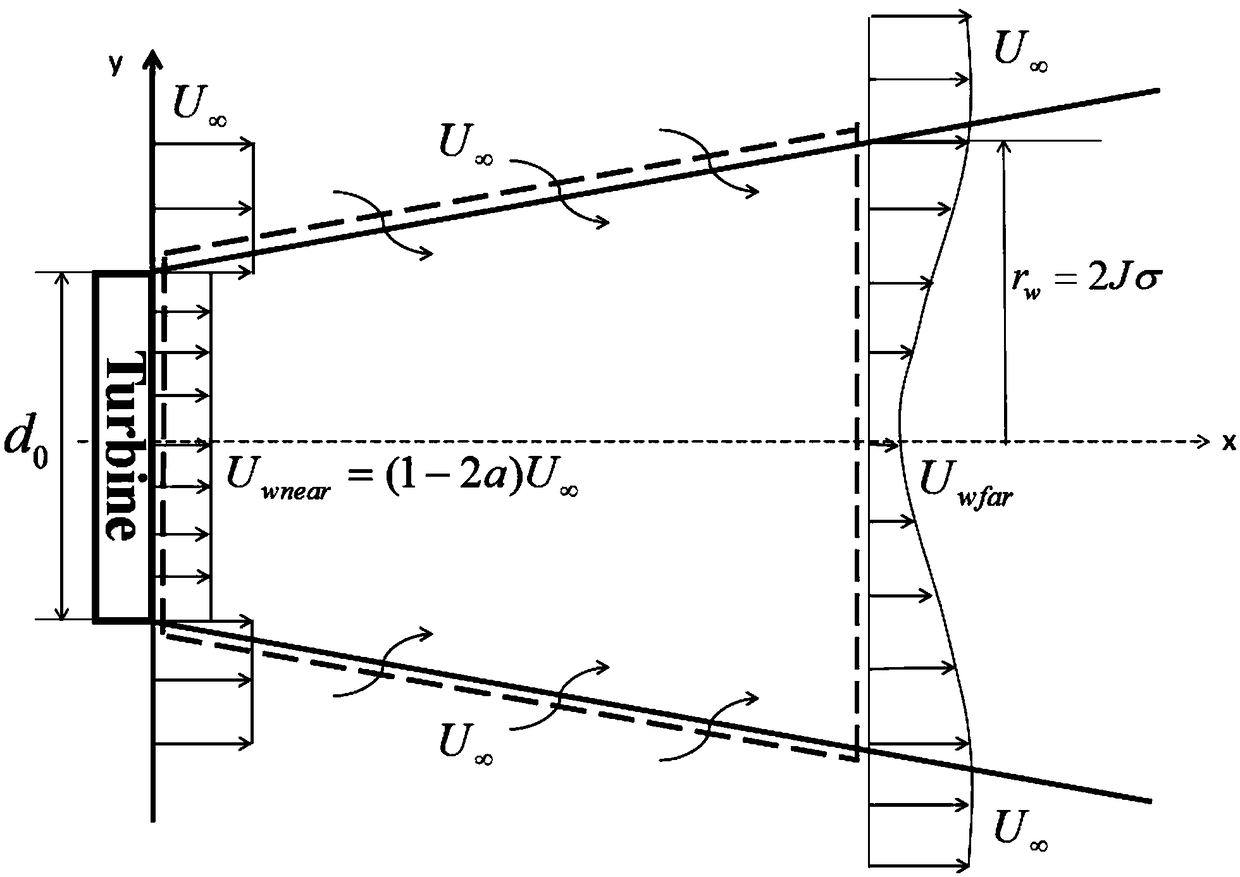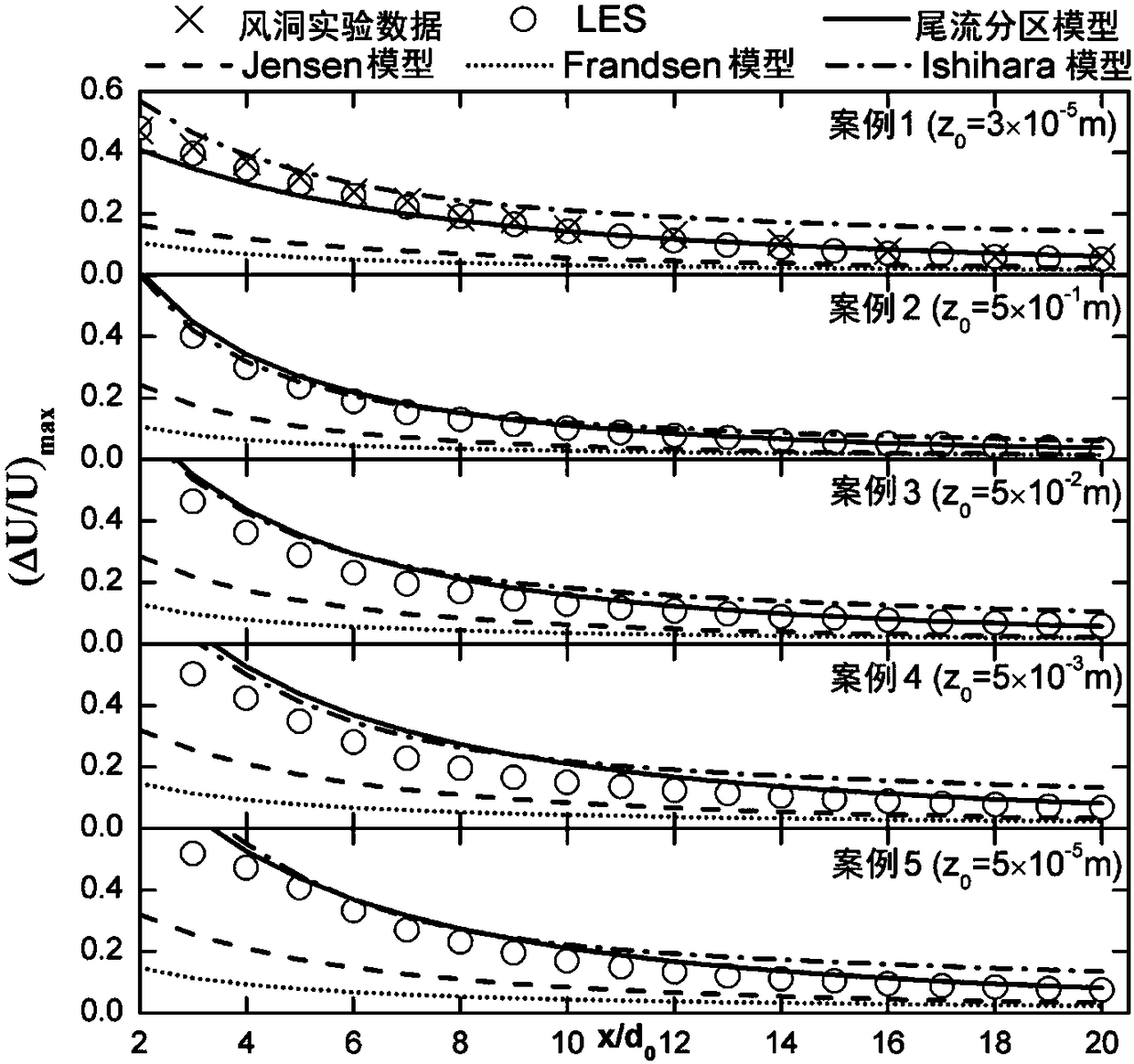Mass conservation-based two-dimensional far-field wake flow analysis model
A technology of mass conservation and analytical models, applied in special data processing applications, instruments, electrical digital data processing, etc., can solve problems affecting the accuracy of calculation results, etc.
- Summary
- Abstract
- Description
- Claims
- Application Information
AI Technical Summary
Problems solved by technology
Method used
Image
Examples
Embodiment 1
[0037] Example 1: Select as figure 1 For the control volume shown, the self-similar speed loss of the LES results in different tip speed ratios and different examples is as follows figure 2 shown.
[0038] An application of a two-dimensional analytical model of far-field wake based on mass conservation, comprising the following steps:
[0039] Step 1: Determine the reference coordinate system, take the center of the wind rotor as the coordinate origin, the rotation axis of the wind rotor is the x-axis (parallel to the incoming flow direction), the radial direction (perpendicular to the incoming flow direction) is the y-axis, and the vertical direction is the z-axis ;
[0040] Step 2: According to the incoming wind speed, compare the curve of the thrust coefficient of the unit with the wind speed to obtain the thrust coefficient C of the unit under this working condition T ;
[0041] Step 3: Determine the value range of the downstream wake boundary coefficient J by analyzi...
Embodiment 2
[0048] Embodiment 2: In this embodiment, the variation of the maximum velocity loss in the horizontal direction with the downstream distance and the distribution of the velocity loss in the vertical wake area are calculated, and the results of the two-dimensional analytical model of the far-field wake are compared with the wind tunnel experimental data, The LES results are compared with other analytical wake models, including the following steps:
[0049] Step 1: Table 1 shows the specific parameters of the wind tunnel experimental data (case 1) and LES results (case 2-5), including the rotor diameter d 0 , hub height z h, wind speed U at hub height hub , thrust coefficient C T , surface roughness z 0 and the ambient turbulence intensity I 0 .
[0050] Step 2: Within the value range of J, take J=1.12 as an example for calculation. At this time, in cases 1-5, the wake expansion coefficients k are: 0.0519, 0.1267, 0.0977, 0.078 and 0.0781.
[0051] Step 3: In order to calc...
PUM
 Login to View More
Login to View More Abstract
Description
Claims
Application Information
 Login to View More
Login to View More - R&D
- Intellectual Property
- Life Sciences
- Materials
- Tech Scout
- Unparalleled Data Quality
- Higher Quality Content
- 60% Fewer Hallucinations
Browse by: Latest US Patents, China's latest patents, Technical Efficacy Thesaurus, Application Domain, Technology Topic, Popular Technical Reports.
© 2025 PatSnap. All rights reserved.Legal|Privacy policy|Modern Slavery Act Transparency Statement|Sitemap|About US| Contact US: help@patsnap.com



